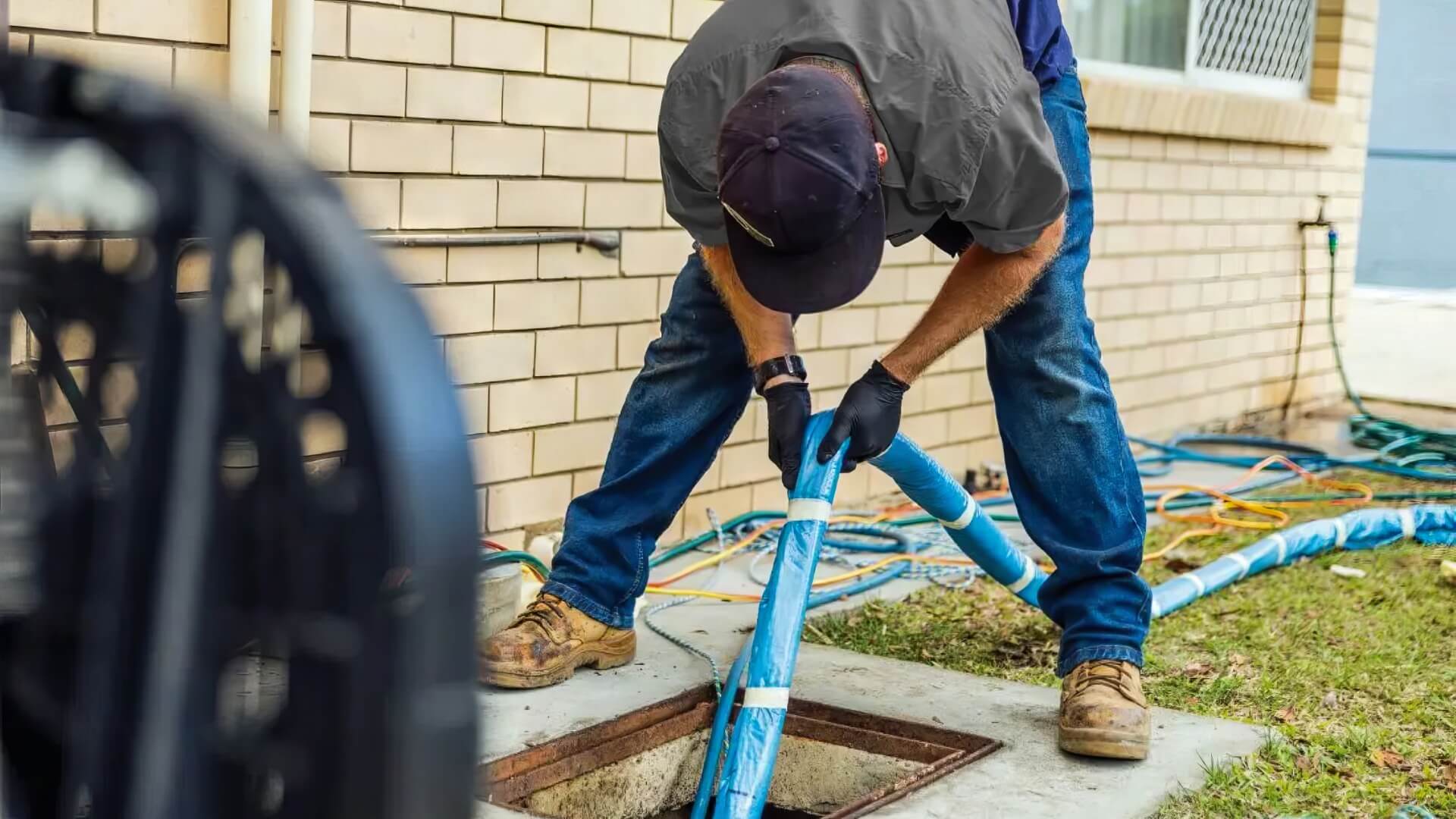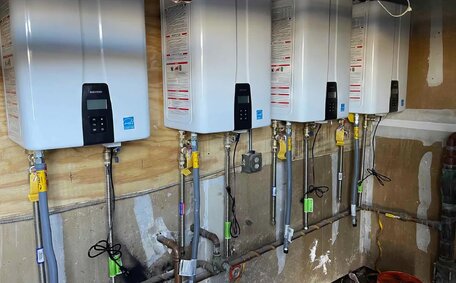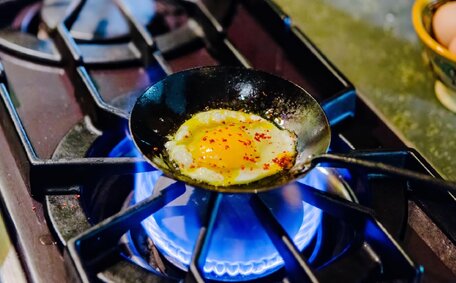Introduction to Fire Sprinkler Systems
Essential in rapid fire detection and suppression, fire sprinkler systems prevent fire spread effectively. They consist of a network of water pipes connected to sprinkler heads and a sprinkler tank that are triggered when a fire is detected. Activated sprinkler heads release water to control and douse the flames.
Colyton Plumbing specialises in fire sprinkler system inspection, testing, maintenance, and repair. Our seasoned professionals in Colyton and Sydney are versed in fire safety standards and regulations.
In this article, we will discuss the process of relining fire sprinkler systems. Over time, corrosion and mineral buildup can damage the pipes and affect your system’s performance. Compared to full system replacement, relining offers a cost-effective alternative to maintain your fire protection system.
We will cover the necessity for relining, the materials utilised, the adherence to standards, and the relining process steps.
Why Fire Sprinkler Systems Need Relining
There are a few key reasons why fire sprinkler systems may require relining over time:
- Corrosion: The water sitting in sprinkler system pipes can start to cause corrosion and rust buildup along the interior lining over 5-10 years. Such issues can result in leaks, blockages, and reduced water flow.
- Mineral deposits: Hard water can leave behind calcium and mineral deposits inside the pipes. These mineral scales can restrict water flow and clog sprinkler heads.
- Localised damage: If part of the system freezes, sudden pressure changes occur, or mechanical damage happens, it may only affect isolated sections rather than the entire system. Relining could begin with targeted repairs.
Fire sprinkler system relining entails the application of an epoxy coating within existing pipes to rejuvenate surfaces without full section replacement. Therefore, relining is an economical repair option extending your system’s lifespan by over a decade. Full system replacement may only be necessary for pipes with severe corrosion where more extensive measures are required.
Proactive relining of aging systems can prevent minor leaks from escalating into significant pipe failures. This prevents water damage, maintains fire protection, and saves thousands in replacement costs down the track.
Corrosion
Corrosion is one of the main causes of deterioration in fire sprinkler systems. There are a few types of corrosion that can affect the pipes:
- Galvanic corrosion: This occurs when two different metals are in contact in the presence of an electrolyte like your water. An electrochemical reaction causes the more anodic metal to corrode.
- General corrosion: Also known as uniform attack, this gradual corrosion thins out pipe walls through an overall dissolving action in water.
- Pitting corrosion: Small, highly localised corroded holes or pits penetrate the pipe, causing leaks.
- MIC (microbiologically influenced corrosion): Bacteria that grows inside pipes accelerates corrosion reactions, increasing dissolution rates.
Even minor corrosion leaks can affect a fire sprinkler system’s water flow and pressure during emergencies. Detecting and managing corrosion early is crucial to averting significant pipe damage or future system failures.
Resolving corrosion through methods like relining restores system integrity and reliability for continued fire protection.
Leakage
Pipe or sprinkler head leaks are clear indicators of the need for fire sprinkler system maintenance or repairs. Small leaks left unchecked can develop into larger problems:
- Consistent dripping from a leak continually adds to water damage and mould growth.
- Weeping leaks reduce system water pressure and flow rates.
- Large leaks or sudden pipe failures can cause flooding and major water damage if not addressed promptly.
During routine inspections, we identify water stains, drips, or areas susceptible to corrosion that might signal emerging leaks in your fire sprinkler system. Catching these early allows for targeted relining to reinforce weakened pipes before leaks occur.
Relining not only seals leaks but also hinders further corrosion, thereby prolonging the system’s service life. Pipe sections with severe leakage from corrosion pitting may still need repair or replacement, but relining reduces the scale of required repairs.
Benefits of Relining vs Replacement
Relining fire sprinkler systems, including the tanks, holds several advantages over full system replacement:
- Cost savings – The cost of relining is approximately 60% less than a full system overhaul. Only pipes needing repairs are addressed rather than unnecessary wholesale changes.
- Convenience – The relining process is minimally invasive, without need for major demolition. Systems can remain partially operational, reducing business disruption.
- Less mess and damage – With less breaking into walls/ceilings, relining creates less reconstruction cleanup versus full replacements.
- Sustainability – By extending the existing system lifespan rather than scrapping piping that tanks need for new parts, relining is more environmentally friendly.
Relining’s efficient process, cost-effectiveness, and enhanced durability render it a preferred maintenance choice over full system replacement. Sections severely damaged by corrosion can be selectively replaced, while undamaged areas benefit from protective relining.
Cost Savings
Since only the pipes needing repairs or corrosion prevention get addressed, it is a targeted, cost-effective solution.
The average cost to fully replace a commercial fire sprinkler system including the water tank is around $20 to $30 per square foot. In a 10,000 square foot property, full replacement could cost $200,000 to $300,000. Relining would cost 50% less, saving over $100,000.
An investment in proactive relining allows your building’s owners to reallocate funds originally budgeted for near-future system replacement costs. It extends the lifespan for 10 or more additional years until full system replacement is truly necessary.
Convenience and Less Disruption
Compared to ripping out and replacing an entire fire sprinkler system, relining is a much less invasive process. This means:
- Minimal demolition of walls and ceilings
- Less cleanup and reconstruction needed afterwards
- Lower noise, dust and other disruptions from construction
- The system can remain partially operational during relining
- No need to completely shut down business operations
Relining internal pipe surfaces, as opposed to replacing entire sections, avoids substantial building work. This is more convenient as it allows properties to continue daily functions with minimal interference.
The ability to phase relining offers more benefits than just preventing full system shutdowns. We coordinate work to avoid critical areas, do sections after hours or schedule around peak occupancy times. This flexibility further reduces disruption to occupants and operations.
Environmental Impact
Relining fire sprinkler systems is more environmentally friendly than full replacement in a few key ways:
- It minimises material use and waste, including that from the sprinkler tank. Only the epoxy coating is needed rather than all new steel sectional piping and parts.
- Reusing existing system components cuts down on energy demands from manufacturing and transporting new parts.
- With extended equipment lifespan from relining, the overall lifecycle lasts longer before any components end up in landfills.
- The process generates no hazardous waste or byproducts.
By making systems last longer and avoiding premature replacements, relining aligns with sustainability goals. We’re proud to offer a reliable service that reduces environmental impact for the community.
The Relining Process and Best Practices
Trained professionals carry out relining through a detail-oriented multi-step process that adheres to industry best practices:
- Inspection: We thoroughly assess the full piping system to identify sections needing repair.
- Cleaning: Pipes get a high-pressure water flush, sandblasting or mechanical scraping to prepare surfaces.
- Epoxy application: A two-part epoxy coating gets blown through the system to adhere to interior pipe walls.
- Curing: The epoxy cures for several hours to bond and harden into a smooth protective barrier.
- Testing and commissioning: We test the relined system end-to-end to ensure proper water flow before returning to full service.
This professional approach is the best way that follows requirements from relining system manufacturers like NuFlow. Patented epoxy coatings, such as those from NuFlow, can lengthen lifespan by over 50 years. Proper application avoids future leaks, restrictions and failures.
Relining should only be done by a licenced sprinkler contractor to ensure quality results, long-term reliability and compliance with fire codes. For detailed information and professional relining services, don’t hesitate to contact us.
Inspection and Assessment
Thorough inspection and assessment is a critical first step before relining a fire sprinkler system. This allows our technicians to:
- Evaluate the extent of corrosion, leakage or other damage issues
- Identify isolated problem areas versus systemic deterioration
- Determine if full replacement is needed for any severely damaged sections
- Decide which pipe runs require relining for preventative maintenance
- Ensure the underlying piping structure remains intact to support an epoxy barrier
- Develop a detailed project plan for the relining process
We visually scrutinise all system components, check for leaks, and may use methods like ultrasonic thickness testing to measure pipe wall corrosion. We then categorise problem severity levels and specify which segments get relined versus replaced.
Basing relining plans on comprehensive inspection data allows precise targeting of necessary repairs. We only reline piping likely to fail if left untreated. This avoids unnecessary work and optimises the cost-effectiveness of maintaining system integrity.
Surface Preparation
Preparing the interior surfaces of fire sprinkler system pipes is essential for proper adhesion of the protective epoxy coating. This involves:
- Flushing: We use high-pressure water jetting at 5000+ PSI to clean out any loose corrosion, old coatings or other contaminants.
- Abrasive removal: Sandblasting, grinding or scraping eliminates any stubborn surface deposits down to the bare metal underneath.
- Degreasing: Any oils, films or debris gets washed away with a degreasing solution.
Effective surface preparation eliminates rust, scale, and imperfections, ensuring a clean base for the epoxy coating. This allows the relining epoxy to key into pores and imperfections to establish a strong, lasting mechanical bond on the molecular level. The smooth sealed surface resists future corrosion or bacterial growth.
We guarantee thorough cleaning and texturising of the pipe interiors before recoating. This procedure secures excellent adhesion and ensures the durability of the epoxy relining.
Applying Epoxy Coating
Applying a protective epoxy coating is a skilled process performed by experienced technicians. We use high-performance application machinery to ensure smooth and consistent coverage.
The application method involves a two-part epoxy resin that is mixed onsite then blown into the empty sprinkler system pipes under controlled air pressure. This allows the liquid coating to thoroughly cover all interior pipe surfaces for complete protection.
As the epoxy coating passes through, it bonds tightly to the bare metal through both chemical and mechanical adherence. We regulate the air flow to achieve an even 30 to 40 mil thickness after curing. This robust membrane prevents corrosion and seals out moisture over the long-term.
The application equipment allows epoxy coating of the system’s entire piping network from a single access point. There is no need to break into walls and ceilings. Once applied, the high-performance coating cures solidly into a smooth protective barrier.
With quality epoxy coatings like NuFlow 7000 properly applied, fire sprinkler systems can be reliably protected from corrosion for 50 years or longer without needing replacement. This brings excellent value over time.
Curing and Testing
Following application, the epoxy coating undergoes a controlled curing process. We ensure optimal temperature and humidity levels to facilitate proper hardening and bonding. Curing had historically been completed within 8 to 12 hours.
After curing, we perform testing and inspections on the relined fire sprinkler system including:
- Hydrostatic testing: We pressurise the system to check for leaks and verify intact seals.
- Flow testing: We confirm required water flow rates and pressure at the farthest sprinkler head, ensuring the water main meets system demands.
- Alarm testing: All detection and monitoring components are checked to ensure proper functioning.
- Visual inspection: We thoroughly examine all epoxy-lined pipes and connections for any flaws.
Stringent testing validates the relining application and ensures optimal protection. It also complies with all standards for putting a relined fire sprinkler system back into active service.
Colyton Plumbing offers a robust 10-year guarantee on all relining work, backed by expert inspection and maintenance. Get in touch for relining services done to certified quality standards.
Maintaining Relined Fire Sprinkler Systems
Ongoing maintenance is essential to maximise the longevity of a relined fire sprinkler system. This involves:
- Regular testing and inspection: Annual flow testing and five-year internal pipe inspections help spot any new leaks or damage early.
- Addressing issues promptly: Any identified problems like leaks are swiftly addressed by our repair service to prevent larger failures.
- Flushing the system: Periodic flushing removes sediment and minerals that could lead to clogs or corrosion over time.
- Checking pipe attachments: We examine external system components like hangers, braces and sprinkler heads for stability and leakage.
- Updating records: All testing and repairs get logged to track system history over decades.
Proactive maintenance preserves system integrity and reliability. It extends the years of expected service life from quality epoxy relining applications. We stand behind expert installation paired with ongoing system upkeep.






